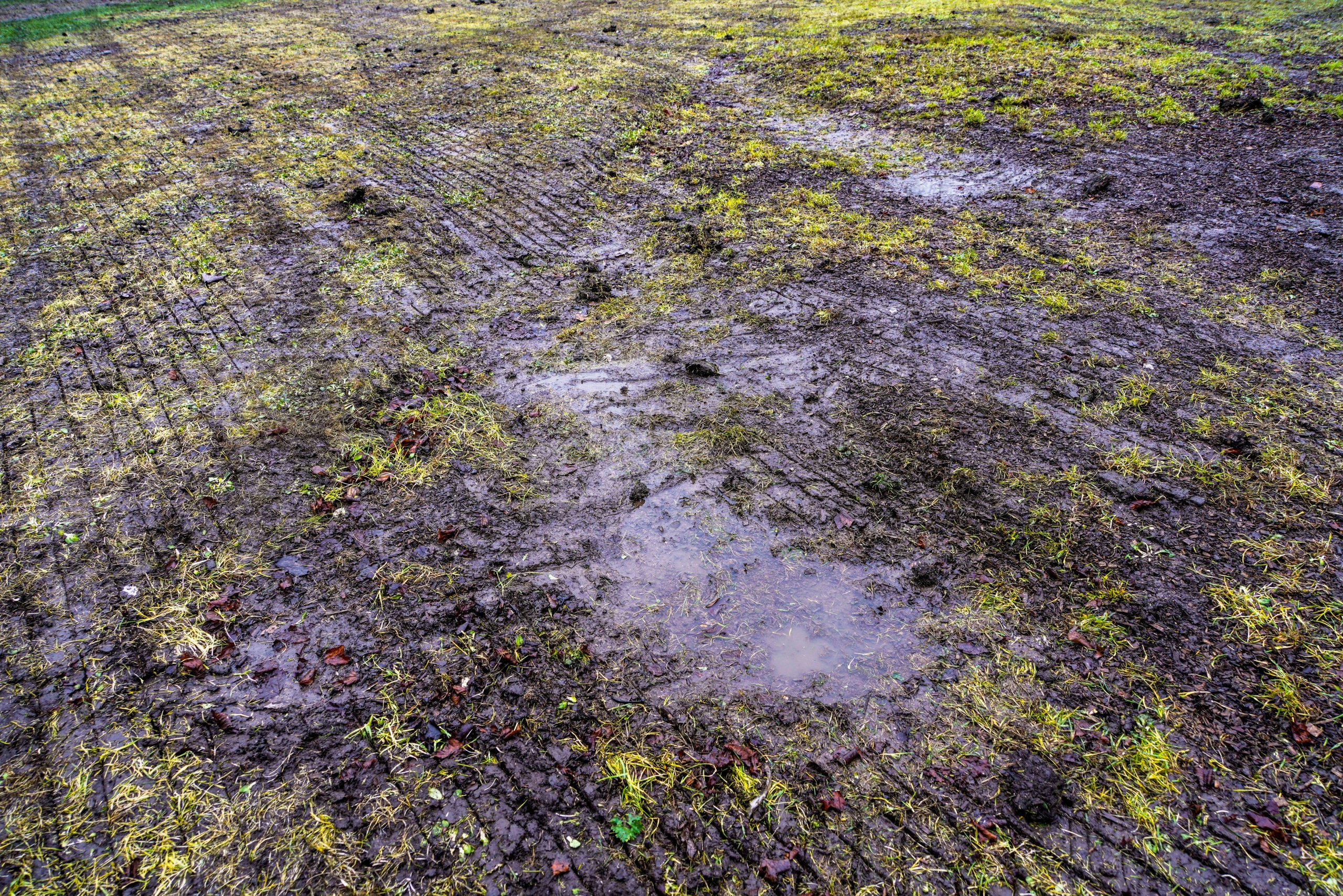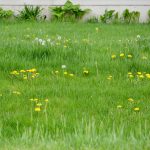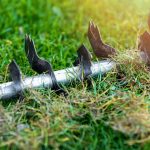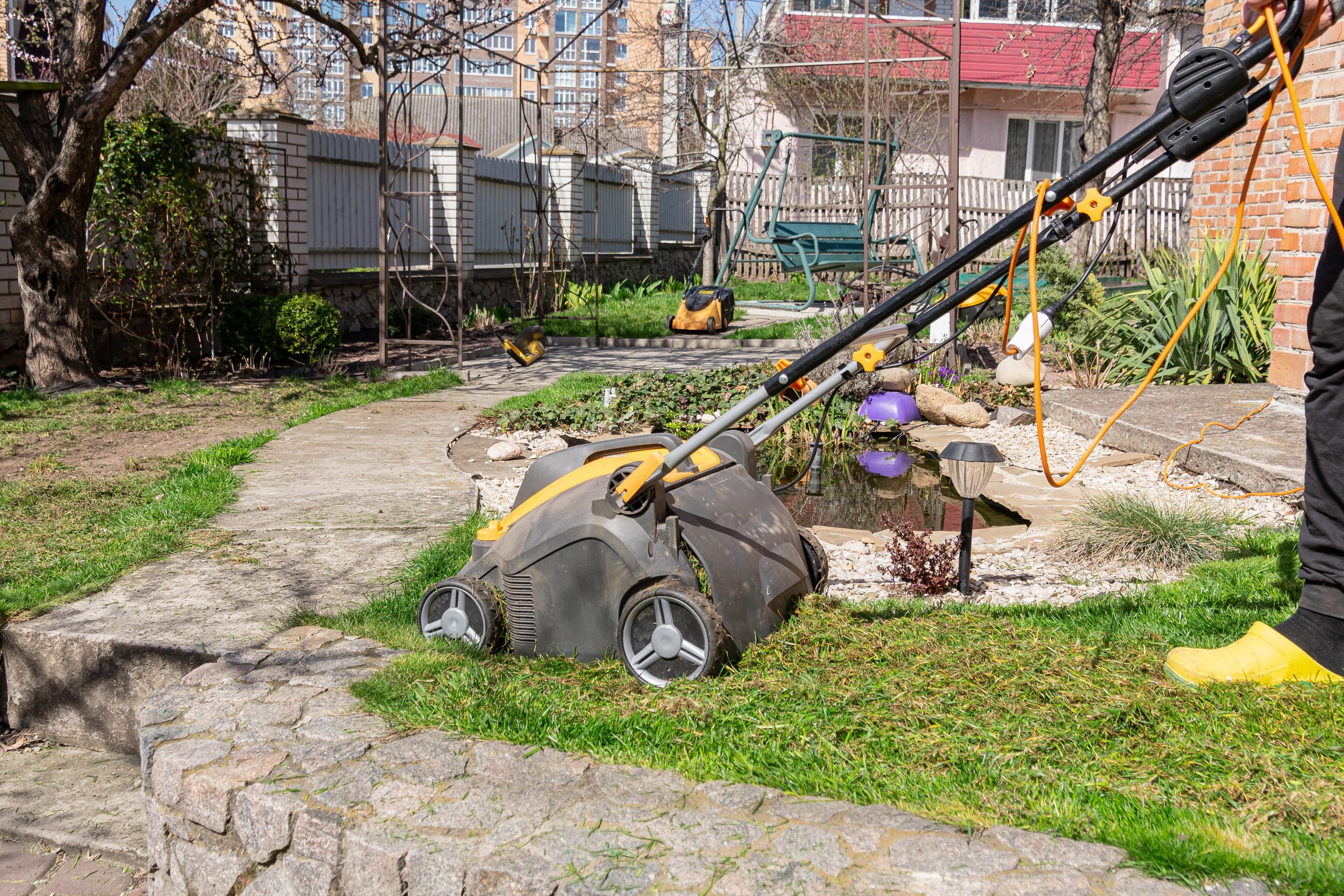It’s that time of year again when homeowners are starting to think about spring and all the work they need to do to get their yards ready. One common task is scarifying the lawn, which is removing thatch buildup from the surface of the soil. However, you should not do this when the ground is wet! In this article, I’ll discuss why it’s important to wait until the ground has dried out a bit before scarifying your lawn
Scarifying a lawn that is slightly moist is ideal but you should avoid scarifying a lawn when it is wet. Scarifying a wet lawn can pull up the grass roots instead of having the desired effect of pulling up the excess layer of thatch and moss.
What Conditions Are Best for Scarification?
The ideal time to scarify is when the ground is firm but the grass blades are wet. The ground should be firm under foot; you shouldn’t be able to hear any squelching when you walk on the lawn. Scarifying a lawn that has has excess moisture/puddles on the surface is a big no no.
The best time to scarify your lawn is immediately after mowing the grass, during a season when it is actively growing.
Typically, the best time of year to scarify is either during the early months of spring (around the month of April) before the ground gets too wet, or late autumn as the ground begins to dry out. This is because the thatch will be dry and easier to remove. If you scarify during the winter or summer months, it can cause problems due to temperature extremes.
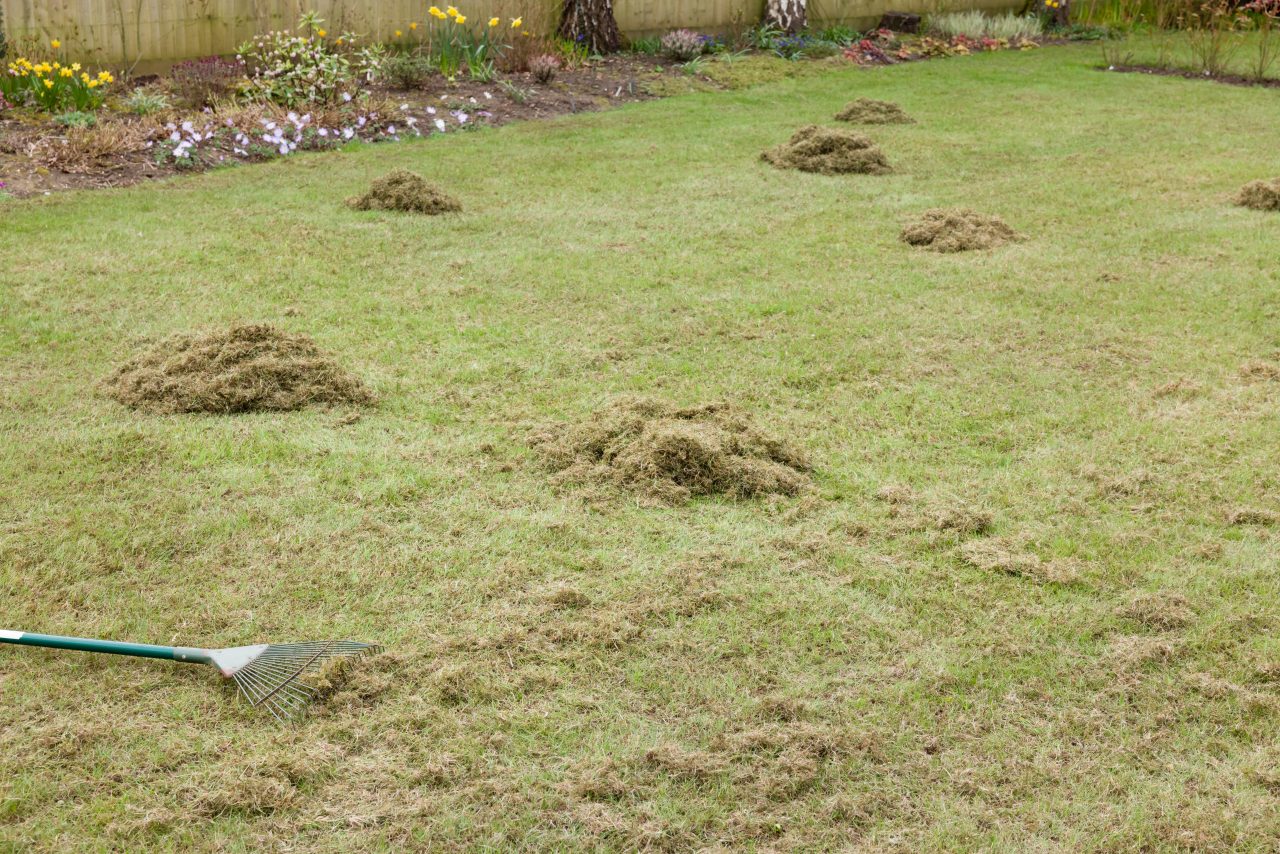
Consequences of Scarifying a Wet Lawn
Scarifying a Wet Lawn Will Pull Grass Up by the Roots
When the ground is wet, it’s easier to pull up grass by the roots. This is because the roots are not as strongly anchored in the soil. If you do this too often, you will end up with a patchy lawn.
You Can Damage the Grass If You Scarify a Wet Lawn
When the ground is wet, it’s much easier to damage the grass blades. This can happen whether you use a powered scarifier or even a manual one. The blades can tear the grass rather than cut it, which will leave brown patches in your lawn. In other words, you will end up pulling up both fresh grass and thatch buildup.
If you must scarify your lawn while the ground is wet, be very careful and go over the area slowly.
Some different scenarios
Zero Moisture
If the ground is completely dry, you will not be able to remove as much thatch.
While it’s best to avoid scarifying your lawn when the ground is soaked, it is also not ideal to scarify your lawn when the ground is completely dry. You will kick up lots of dust and debris, as well as run the risk of damaging the grass blades.
Additionally, dry soil is prone to crumbling and breaking apart, so when you scarify a completely dry lawn, there is the possibility that you might also tear up grass roots.
The Ground Is Firm but Grass Blades Are Wet
This is the ideal time to scarify your lawn. The ground will be moist enough so that you can remove a good amount of thatch, but not so wet that you risk damaging the grass.
If you have a powered scarifier, this is the time to use it. It will effectively remove thatch and moss from the ground, as well as aerate the soil below. The only drawback when scarifying your lawn at this moisture level is that the waste will be heavier than dry scarifying waste, due to the extra moisture.
It Rained Yesterday and Has Had Some Time Under Sunlight
The ideal time to scarify your lawn comes down to not only the moisture levels of the soil but also the type of soil on your lawn. If it has recently rained and your lawn soil is loamy or sandy, it is usually okay to scarify, as the soil won’t retain water as much.
Just make sure to avoid scarifying if the ground is too wet. However, if your soil is heavy with clay, it will retain too much moisture and create a muddy mess. In this case, it’s best to wait until the ground has had a chance to dry out a bit. Additionally, clay-heavy soil typically doesn’t create much thatch or moss, so you may not need to scarify at all.
It Has Just Stopped Raining
As a general rule, do not scarify your lawn if it has just stopped raining. Scarifying your lawn when the ground is too wet will result in damage to the grass, as well as creating a muddy mess.
If you see puddles, do not scarify. If you step on the grass and it sounds moist or you see water bubbling around your feet as you walk, do not scarify. Doing so will only damage your lawn.
It Is Raining
Absolutely do not scarify your lawn if it is raining. Not only will you cause significant damage to your lawn, but you will also get all of your gear muddy! For these reasons, it is best to wait to scarify your lawn once the soil has had time to dry a bit.
In Summary
Be sure to avoid scarifying if the ground is too wet, as this will only damage your grass. Remember, the ideal time to scarify is when the ground is firm but the grass blades are wet. This will allow you to effectively remove thatch and moss without damaging your lawn.
The best time to do it is in late fall after the grass has stopped growing or in early spring when the grass is just beginning to grow and the ground isn’t too wet. In the fall, the thatch will be dry and easier to remove. If you wait until later in the spring, the ground and the thatch will be too wet and can cause problems (as we discussed above).
More Helpful Resources
- Lawn Scarification Recovery Time Guide – Are you wondering how long it’s going to take your lawn to recover from scarification? Click the link to find out more.

